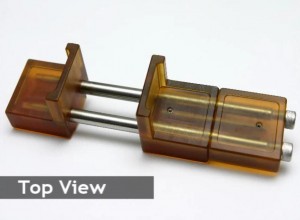Mega and Giga-Session Hair Restoration Made Easy Through Laxometer
Wednesday, December 9th, 2009 Recently, Dr. Parsa Mohebi, Medical Director of US Hair Restoration Los Angeles, gave a lecture on a new way to use the Laxometer during mega and giga-session hair transplants at the annual ISHRS (International Society of Hair Restoration Surgery) gathering in Amsterdam, Netherlands. As mentioned in other hair transplant industry gatherings, the Laxometer has the ability to make more accurate the strip removal method during a follicular unit hair transplant and, at the same time, minimizing the risk of donor scar complications.
Recently, Dr. Parsa Mohebi, Medical Director of US Hair Restoration Los Angeles, gave a lecture on a new way to use the Laxometer during mega and giga-session hair transplants at the annual ISHRS (International Society of Hair Restoration Surgery) gathering in Amsterdam, Netherlands. As mentioned in other hair transplant industry gatherings, the Laxometer has the ability to make more accurate the strip removal method during a follicular unit hair transplant and, at the same time, minimizing the risk of donor scar complications.
At the 2009 ISHRS Meeting, Dr. Mohebi discussed a new manner in which to utilize the Laxometer for patients who have limited laxity of the scalp because of previous hair transplant surgeries or for people needing a max number of grafts in one session (3000+, 4000+, 5000+, etc.). In 2008, Dr. Mohebi tried a different method by which he removed the strip in sequences for hair restoration procedures using the Laxometer before and after removal of every part of the strip. This particular way of using the Laxometer has resulted in a safer strip removal and, at the same time, has lessened the risk of donor wound complications.
The findings revealed at the ISHRS meeting proved that the Laxometer is the ideal surgical tool for increasing the number of hair grafts during a strip hair transplant while minimizing donor wound complications of a hair transplant surgery. Because of the results Dr. Mohebi found, he has been using the Laxometer at his California hair transplant offices quite often and it has resulted in a lot of satisfied patients.

